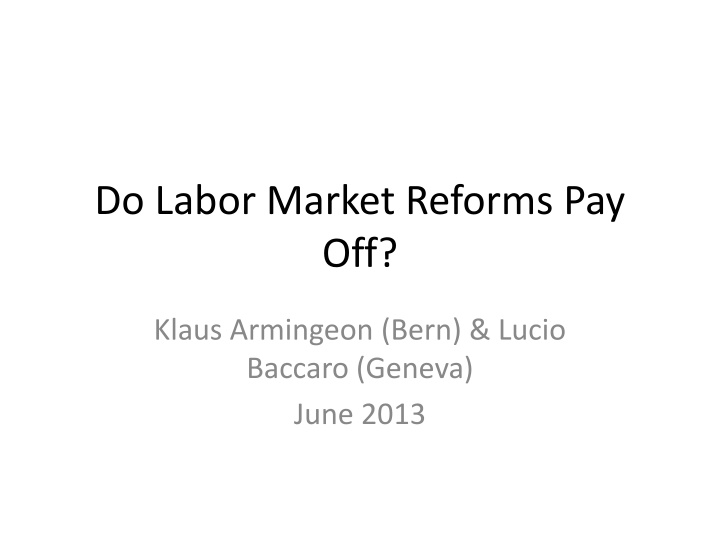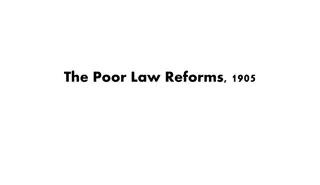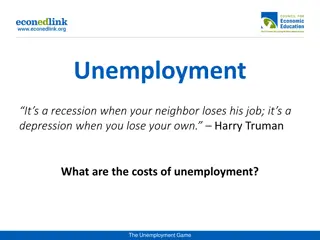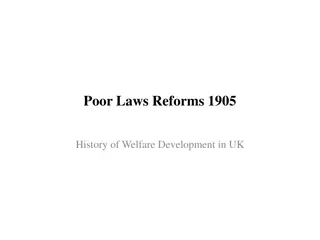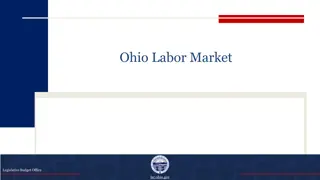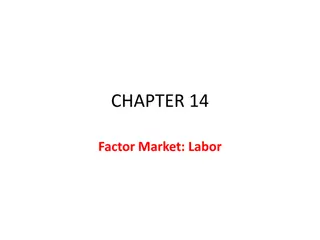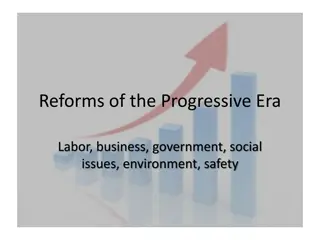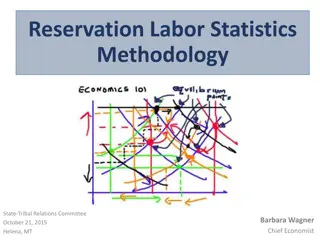Labor Market Reforms and Unemployment: A Detailed Analysis
Labor market reforms and their impact on unemployment rates are examined through a Difference-in-Differences analysis in this study led by Armingeon and Baccaro in June 2013. The research questions whether liberalizing reforms actually reduce unemployment and increase employment levels. The findings indicate that while liberalization of labor markets may not necessarily lead to reduced unemployment, under favorable conditions it can have a positive impact. The study focuses on identifying key reforms and analyzing their effects, utilizing a quasi-experimental design to evaluate the impacts of such reforms on unemployment rates across 14 EU countries from 1972 to 2012.
Download Presentation

Please find below an Image/Link to download the presentation.
The content on the website is provided AS IS for your information and personal use only. It may not be sold, licensed, or shared on other websites without obtaining consent from the author.If you encounter any issues during the download, it is possible that the publisher has removed the file from their server.
You are allowed to download the files provided on this website for personal or commercial use, subject to the condition that they are used lawfully. All files are the property of their respective owners.
The content on the website is provided AS IS for your information and personal use only. It may not be sold, licensed, or shared on other websites without obtaining consent from the author.
E N D
Presentation Transcript
Do Labor Market Reforms Pay Off? Klaus Armingeon (Bern) & Lucio Baccaro (Geneva) June 2013
Problematique Politicians: May 29, 2013: EU Commission will ease ist hard line on austerity on the condition that countries embark on labor market reform rigid rules: inefficiency, segmentation, dualization Economists: Labor market rigidities are responsible for high unemployment. Liberalization works but this is not unconditional VOC and others: Rigidities may not be bad provided there are institutional complementarities
Summary Focus: Reforms not levels Question: Will liberalizing reforms of labor markets reduce unemployment and increase employment? If no: Under what conditions will liberalization work? Answers: (1) No (2) Favorable conditions Difference-in-Differences fRDB plus own data collection 14 EU countries, 1972-2012
Identifying reforms fRDB: liberal experts assemble a database on reforms with comparable information Criteria: Complete (majority of workforce) and / or structural (modification of overall design of system) 171 country-years with liberalizing reforms. From these we take the top 15% (26 cases=5% of all 546 country-years). Control group: Country years without reforms/USA Example: Hartz Reforms
Analysis The basic idea of a difference- in-differences analysis is to de- compose the change in outcome variables before and after treatment in (1) a parameter which indicates the outcome value before treatment , (2) a parameter that indicates changes in all outcome values after treatment, (3) a parameter that indicates the average outcome value in treatment countries which is not due to the treatment and (4) a parameter that indicates the impact of the treatment (see Wooldridge 2003: 454-460) u, which is due to reform = (u after treatment in treatment group u in control group after treatment)-(u before treatment in treatment group-u before treatment in control group) Quasi-Experimental design (no random assignment to treatment) Improvements: trend; exclusion rules, entering into force, lags
Figure 1: Hypothetical Trajectories of the Unemployment Rate in Treatment and Control Groups
Trajectories: Unemployment (left) and employment (right)
Regression analysis DV: residual of a regression of the original outcome variable on time and country dummies )average 5 years after reform) b1 treatment b2time (1 if post-treatment) b3treatment * time b4lagged DV b5trend b6treatment group * trend b7treatment group * time b8trend * period dummy b9controls, such as growth
Robustness tests Raw data rather than residuals Different periods before, after Different operational definitions of reforms Different data bases (Scruggs, EPL) Only non-employment benefits Standard TSCS Ceiling effects (EPL as a control)
When does it work? Consistency Context Growth Policy Product market regulation Social policy (two measures) Tax policy Politics Liberal Government Single Party/Minimum winning coalition Vetopoints
When does it work? A simple measure of success is the difference between the differences of the respective dependent variable in the treatment and the control group. A second measure controls for the trend and compares the differences between the slopes in the treatment groups with the differences between the slopes in the control group. We defined a reform as successful if both measures were positive.
When does it work? Truth table Context: Economic growth is crucial for success. In all cases in which reforms failed, economic growth was weak. In 80 percent of all cases of successful reforms, economic growth was strong. Policy No success without supporting development of the welfare state. In order to improve employment outcomes, liberalization of the labor market has to be accompanied by public policies that do not countervail the logic of liberalization. In 85 % of all failed reforms, liberalized labor market rules tended to be offset by increasing social policy spending (standardized by GDP). In contrast in 80-89% of all cases of successful labor market reforms, social policy development did not countervail but that means that politicians do not expand WFS more than growth rate. Politics Political institutions are of some relevance for the success of liberalizing reforms. Social democratic and centrist parties engage more frequently in major liberalizing reforms than conservative-liberal parties, but this is irrelevant for success. In 57% of all failed reforms, government were not much constrained by many institutional veto player, while this share was 90% in the case of successful reform
Conclusion A common trajectory: Liberalization In about 50% of cases reforms are successful, in about 50% they fail. Growth is crucial (and perhaps once you have growth you don t need reforms)
